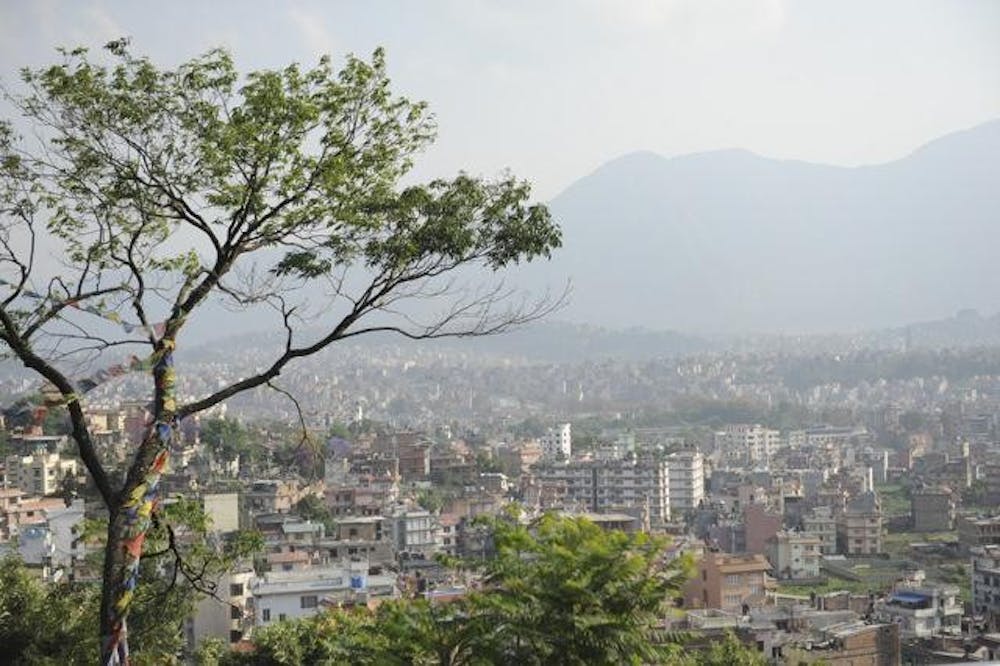As the plane approached the Kathmandu Valley for a landing, the enormous rolling green hills seemed to stretch into eternity, the vegetation thick and relentless. Then the hills gave way to a pastel colored urban sprawl.
Nepal is densely populated, including the capital which houses an estimated 3.4 million people and some of the most important religious sites for both Hindus and Buddhists worldwide.
I ventured to Nepal for three reasons. The first was to volunteer, the second was to see something extraordinary and the third was to learn something along the way.
I could easily check number two off my list right away. Everything was breathtaking, at least from a distance.
This was my first time seeing Asia properly, and it seemed like the planet’s last great bastion of antiquity.
The city was magnificent and multicolored. The buildings were painted pastel shades of green, blue, pink and yellow, with Buddhist prayer flags waving from masts and adorning almost every building.
Yet Nepal is the poorest country in South Asia and the 12th poorest country in the world, according to the World Bank. This fact becomes more apparent when you enter Kathmandu.
I took a taxi to a guest house in Thamel, the tourist district in the city, where I was scheduled to meet with fellow volunteers and spend a few days learning the language and culture of the locals.
The drive there was eye-opening.
The roads were covered with potholes and at certain points disappeared entirely only to be replaced with dust and gravel. The streets were lined with piles of rubbish, some of which were lit on fire by the locals, and from close up, the pastel buildings looked as though they were either falling apart or never quite finished with construction.
Stray dogs and the occasional cow crossed our path. The smell of cow dung was at times both potent and inescapable. The streets were also filled with beggars, homeless persons, children begging tourists for spare change and the occasional mother using her baby to draw sympathy from foreigners.
It was a huge contrast compared to what I had seen from far away. In spite of it all, the place had a certain charm about it.
The streets are lined with small shops selling everything from jewelry to hand stitched local garb and Hello Kitty knit gloves. The local women dressed in traditional Hindu Saris and decorated their necks and wrists with opulent pieces of gold jewelry. However the younger generation, aside from few exceptions, seemed to prefer jeans and T-shirts.
After the somewhat disturbing ride — drivers seemed to have little regard for the Western rules I was used to — we arrived at the guest house.
It was a small and tranquil Italian-style yellow brick building with a courtyard, quiet reading nook and private garden. After getting to know a few fellow volunteers, I went to the rooftop.
Witnessing the city from afar, I found the charm all over again.
A Bastion of Antiquity: Perfect from a Distance

Get stories like this in your inbox
Subscribe





